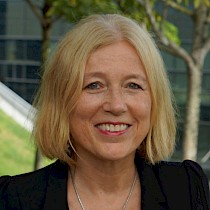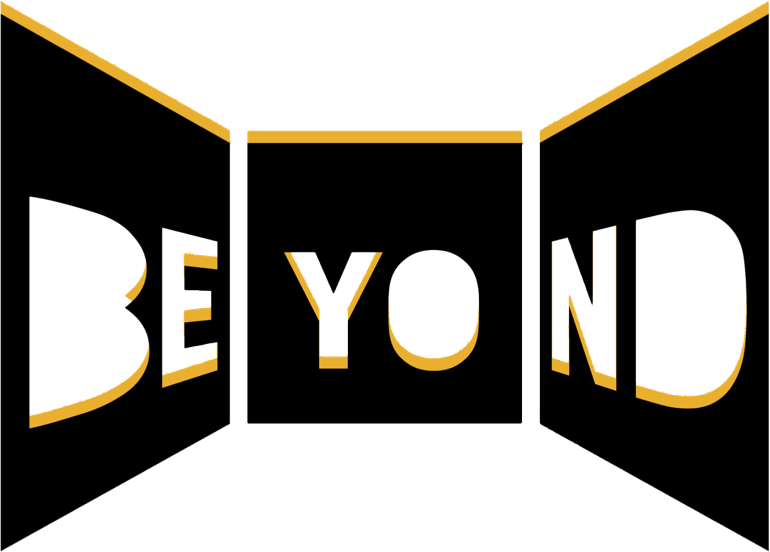Prof. Vibeke Sorensen

Vibeke Sorensen ist eine Künstlerin und Komponistin und arbeitet als Professorin in den Bereichen Digital Multimedia and Animation, Stereographie, Interactive Architectural Installation, sowie Networked Visual Music Performance. Ihre Arbeit im Bereich experimenteller neuer Medien dauert bereits mehr als vier Jahrzehnte an und wurde unter anderem in Büchern, Galerien, Museen, Konferenzen, Vorträgen, Filmfestivals , über Kabel und Broadcast-TV, sowie im Internet weltweit veröffentlicht und ausgestellt.
Seit 1980 lehrte und entwickelte sie Studienprogramme in Media Art an der Virginia Commonwealth University, dem Art Center College of Design , dem California Institute of the Arts und der Princeton University. Von 1984 bis 1994 war sie Gründungsvorstand des Computer Animation Laboratory an der School of Film/ Video am California Institute of the Arts ( CalArts ). Des Weiteren war sie von 1994 bis 2005 Professorin und Gründungsvorsitzende der Division of Animation and Digital Arts (DADA) an der School of Cinematic Arts an der University of Southern California (USC ). Seit 2009 ist sie Professorin und Vorsitzende an der School of Art, Design and Media (ADM) an der Nanyang Technological University (NTU) in Singapur.
Vibeke Sorensen’s Werdegang erstreckt sich von interdisziplinären Kollaborationen, über Kunstwissenschaften sowie Kunsttechnik, einschließlich der Entwicklung neuer Medien am Rensselaer Polytechnic Institute, der Princeton University, der University of Southern California, der University of California San Diego / San Diego Supercomputer Center, dem Neurosciences Institute of La Jolla und dem California Institute of Technology. Ihre Forschungsarbeit sowie ihr künstlerisches Schaffen wird unter anderem von USC, NTU, dem New York State Council on the Arts, der US National Science Foundation sowie der Intel Corporation unterstützt. Im Jahr 2001 war sie Mitglied der Rockefeller Foundation im Bereich Film/ Video/ Multimedia. 2007 war sie Vorsitzende der ACM SIGGRAPH Art Gallery: Global Eyes.
Ihre aktuelle Arbeit „Illuminations“ (2013) besteht aus einem großflächigen, beleuchteten Folding Screen und einer interaktiven Visual-Music Installation mit Plant Biofeedback, allgegenwärtiger Datenverarbeitung und Elektroakustik Musik, welche sie komponiert hat. Eine stereoskopische Version davon wurde im Jahr 2013 beim 3D-Festival BEYOND ausgestellt. „Vishwaroop“ (2014) ist eine 4K generative Dome Animation mit Musik des Sitar-Virtuosen Kartik Seshadri. Ihre kinetische Licht-Klang Skulptur „Mood of the Planet“ (2015) enthält globale und Echt-Zeit Big Data, Twitter und selbst komponierte Musik. Ihr jüngstes Werk „Mayur“ aus dem Jahr 2015 beinhaltet Musik von Kartik Seshadri und ist eine 4K Animation, zu welcher sie von asiatischen Textilien, Symbolen und der Kosmologie inspiriert wurde.
Synopsis
Plants and the Planet
Plants are the lungs of the planet and the source of all life, the foundation of every ecosystem. When we replace complex ecosystems with very reduced ones, we create deserts on land and dead zones in the oceans. We ignore these connections at our peril. We need to experience them. Rice, for example, is the single most important food crop for humans, but it is also the source of invisible greenhouse gas emissions from methane and nitrous oxide, which have a larger impact on global warming than all of the world’s airplane travel. This impact can be reduced by 2/3 through harmless changes to irrigation schedules, but the effects are invisible to farmers. By sonifying and broadcasting the emissions from a single rice plant, the cry of the Rice Goddess can be heard by the farmers. A different experience is created for Western consumers, with scenes of the beautiful forests that are now disappearing from the world’s jungles. Printed on sustainable silk and wrapped around our bodies, they bring us into closer touch with the life that we must steward and protect. We already know what needs to be done, but we need to see, feel and experience our relationship to the life that sustains us.
This talk will review several creative works that concern plants and the planet, suggesting alternative approaches to navigating the complex relationship between nature, human beings, and technology in a time of planetary ecological crisis.
Alle Sprecher
- Refik Anadol
- Thorsten Bauer
- Prof. Stefanie Betz
- Prof. Ina Conradi Chavez
- Mark Chavez
- Florian Dohmann
- Dan Haab
- Dr. Lily Hibberd
- Prof. Jeroen van den Hoven
- Professor J. Stephen Lansing
- Mathew Lawrence
- Prof. Jason Edward Lewis
- Roman Lipski
- Dr. Sebastian Meier
- Prof. Galina Mihaleva
- Dave Murray-Rust
- Prof. Dr. Dr.-Ing. Jivka Ovtcharova
- Gülsel Özkan
- Dr. phil. Dipl.-Ing. Oliver Parodi
- Ludger Pfanz
- Thea Riofrancos
- Dr. Matthias Röder
- Seda Röder
- Prof. David Rolnick
- Prof. Rasa Smite
- Dr. Christoph Schneider
- Dr. Markus Schmidt
- Kathleen Schröter
- Prof. Vibeke Sorensen
- Holger Volland
- Prof. Victoria Vesna
- Prof. Charles Wang
- Yulu Wang
- Daniel Walther
- Prof. Dr. Steffen P. Walz
- Pawel Wargan
- Elizabeth Wathuti
- Prof. Dr. Marion Weissenberger-Eibl
- Wang Zhigang PH.D
Kontakt
Interesse? Fragen?
Schreiben Sie uns:
info@beyond-festival.com




